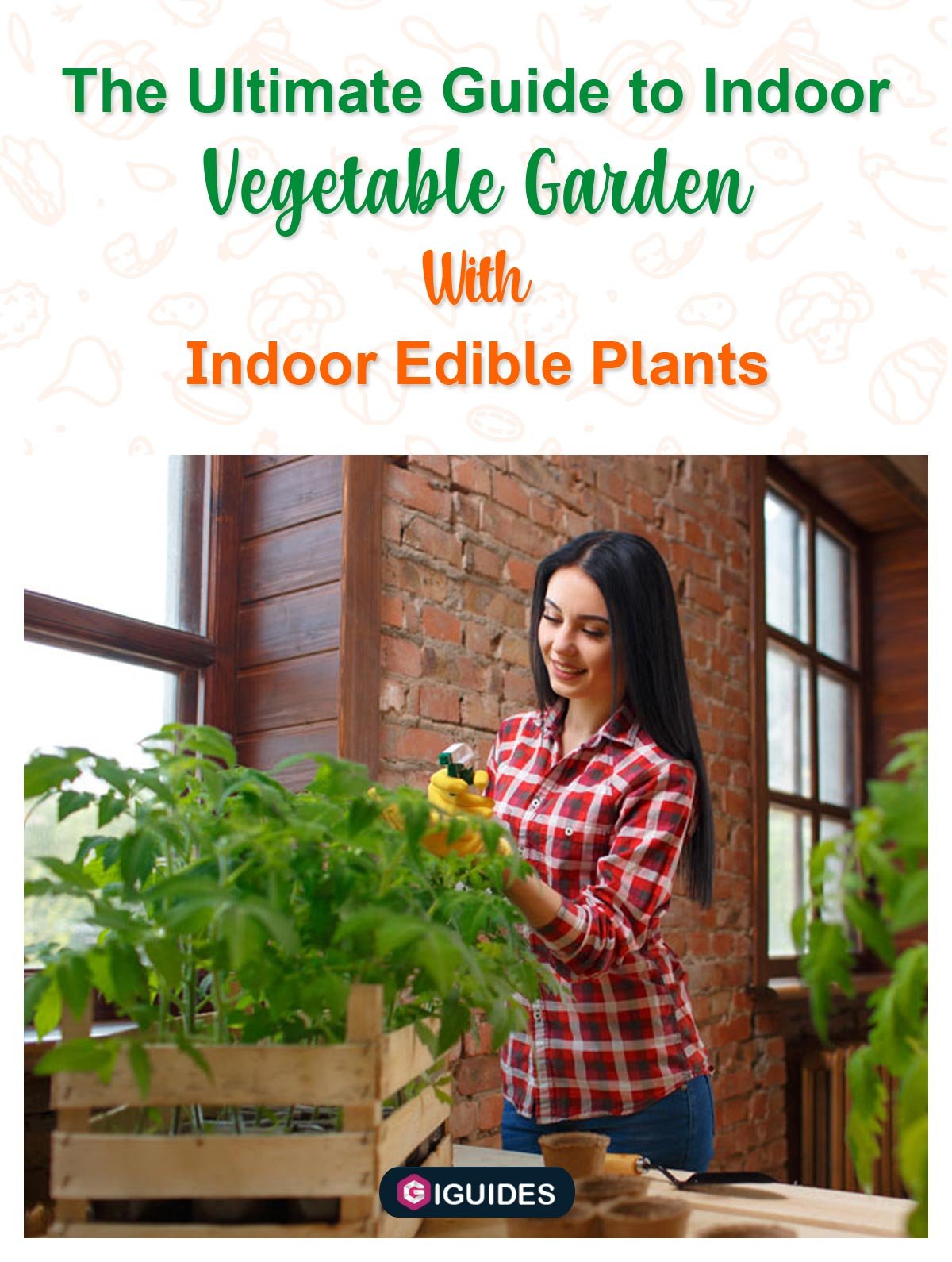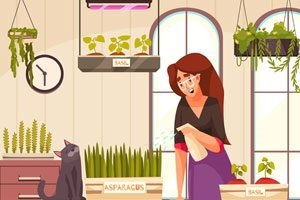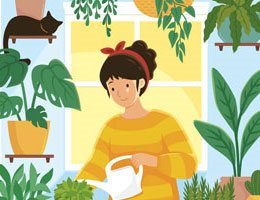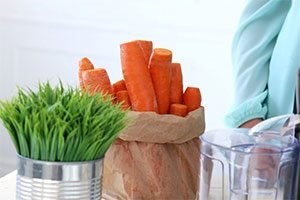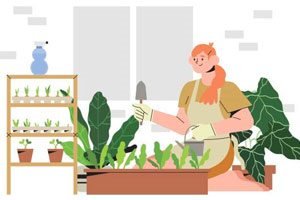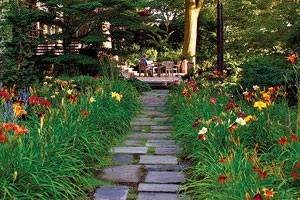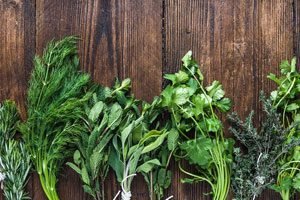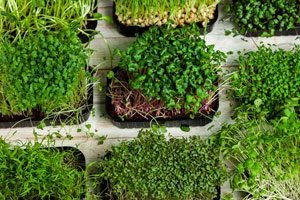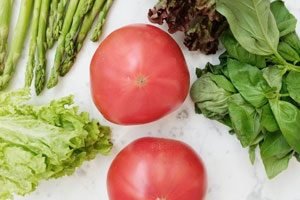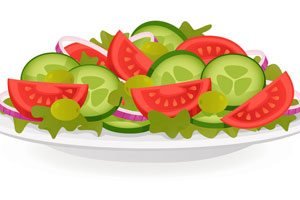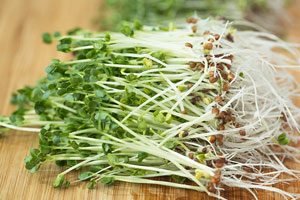Setting up an indoor vegetable garden means growing edibles, particularly vegetables, in your house.
Even if you live in a 2-room apartment, an indoor garden can fulfill your gardening passion. It is the perfect alternative to outer gardening space.

Having an indoor veggie garden combines emotions and benefits perfectly. You get fresh vegetables straight out of your pretty, little farm. You can grow almost all the veggies all year round. Also, you can save on your supermarket errands for every meal, and subsequently, the money spent on it.
Apart from all, growing indoor plants has one supreme purpose. As Peggy Hardigree says in his book ‘The Edible Indoor garden’,
“There is a great reward in planting a seed or cutting and watching it sprout from the earth, send forth its leaves, its blossoms, and finally, its fruit. There is something joyous about a partnership with Mother Nature, in assisting her with the nurture of her children-and no fruit or vegetable tastes quite like those you grow yourself.”
There is nothing like growing a vegetable or fruit from the seed. It is like taking care of a child till he grows big and healthy. And, you swell with pride just by looking at him.
Why Do We Need an Indoor Vegetable Garden?
Indoor food plants can not only provide food but also uplift your place. Here are a few reasons you should get an indoor garden today:
1. Improved Well Being:
A study shows that increased exposure to green scape increases positive feelings. It enhances your mood and strengthens your mental health.
Also, more exposure to nature decreases the chances of asthma, stroke, and heart diseases. The National Institute of Health associates it with numerous health benefits.
Since we spend most of our time indoors, we should surround ourselves with fresh, green plants.
2. Increase Air Quality:
Indoor plants improve the air quality of the surrounding. They also lower the temperature and increase humidity. Having an indoor vegetable garden gives the place a clean environment.
3. Organic Food:
If you set up an indoor vegetable garden, you get a lifetime supply of vegetables. Healthy, organic, fertilizer-free vegetables that taste divine. Sprouts, bell paper, microgreens, lettuce, carrots are a few things you can grow.
4. More in Little Space:
Nowadays, most people live in apartment buildings with no garden or backyard. In this case, an indoor garden comes in handy. You can set up your little farm wherever you find space- window sill, balcony, or a patio.
You can also set up an indoor vertical vegetable garden in your home, for instance, around a window or between two doors. They not only solve the problem about space but also look good.
5. Serves Aesthetics:
Whether it is a microgreen on a window sill or shelf filled with indoor plants, your place lights up. Not only do indoor plants clean your air but make it fresh and energizing.
You can also go with some DIY indoor vegetable garden ideas. For example, you can set up a ladder planter or create a mason jar garden. It looks great as well as gives you fresh vegetables.
Keys to a Successful Indoor Vegetable Garden:
❖ Forge A Plan Beforehand:
Planning ahead of growing your indoor vegetable saves you a lot of trouble. First, decide which vegetable you are going to grow. Choose vegetables that can thrive indoors.
Now you can plan other things, such as lighting, space, as per the requirement of your plant. The best indoor vegetable garden system is the one containing all optimal growing conditions for your little mate.
❖ Find The Right Location:
The kitchen is usually a go-to space for indoor plants. But, not always! Each plant has different requirements.
Some plants need a place with some heat, such as tomatoes. The kitchen or a south-open window is perfect for them. Conversely, some plants require cool and low humidity space.
Research about the vegetable you are growing, and find its suitable locations. A corner of your room or the basement- each serves as a perfect location.
While designing your indoor garden, give each pot its due space to grow and expand. Try not to overcrowd different plants together.
❖ Indoor Vegetable Garden Lights:
Light is the chief factor for the growth and reproduction of a plant. Each plant has a different light requirement- low, medium, high, very high.
Sunlight is the best for maximum growth and sustainability of your indoor garden. However, too much sunlight can burn or wither the plant. Choose a location that allows the most natural light but with some shade.
In winters- or case of no sunlight- use an artificial light system. Many lights are available- fluorescent lights, incandescent light, mercury lamps.
❖ Maintain The Airflow:
For plants growing indoors, airflow is critical. It prevents molds and bugs from damaging the plant.
Keep a proper airflow in the place where your garden is, such as open windows. If you have no windows, such as if in the basement, use a fan to maintain ventilation.
❖ Proper Water/ Drainage:
The water requirement is different for each plant. Generally, as the plant grows and stabilizes, you reduce the watering frequency. It is highest for the newly planted seeds.
The amount of water your plant needs also depends upon the temperature and humidity of your garden. The higher the temperature and less the humidity; the more the water requirement. Use a container with a proper drainage system. According to the Missouri Botanical Garden, overwatered soil deprives roots of oxygen. It leads to root death, hindered growth, and wilted leaves.
❖ Optimum Humidity:
Humidity is another crucial factor in indoor plant growth. A plant needs more humidity while sprouting. Keep the sprouting plants in more humid areas.
Afterward, change your plant location to a less humid place. Sometimes, you can add a humidifier to keep the humidity level intact.
❖ High-Quality Potting Mix:
Do not use outdoor garden soil for your indoor vegetable garden. Use a high-quality potting mix. It has more nutrients for the optimum growth of potted plants. Also, it is free of weeds, fungus, and bacteria present in the soil.
Indoor Hydroponic Vegetable Garden:
Hydroponics is a cultivation method in which a plant is grown in a nutrient liquid instead of soil. It is the most common setting of an indoor vertical vegetable garden.
Why Hydroponics?
- Space-friendly: It occupies less space as compared to soil cultivation. You can move the plants after they have grown. Thus, hydroponics is the best choice for people with fewer gardening spaces.
- Decreased water usage: the root systems of hydroponics are usually in a trough. Therefore, water usage is up to 70% reduced due to less evaporation.
- Better yield: hydroponics yields better quality and quantity than conventional cultivation.
- No pesticides: since hydroponics do not contain soil, they have controlled growth conditions. It allows little to no use of chemical pesticides.
Thus, hydroponics is an eminent option for indoor food plants. You can grow several crops through hydroponics, such as tomatoes, cucumber, strawberries, and herbs.
5 Vegetables to Start Your Indoor Edible Garden With:
Now that you have learned about indoor vegetable gardens. Let’s set up your own! We have a few ideas as to where you can start.
1. Herbs:
Technically, herbs are not vegetables; but they are a good start for an indoor garden. They are easy to grow so that new people at gardening can go at it.
Parsley, basil, chives, cilantro, or rosemary are a few herbs you can grow in your home.
2. Microgreens:
They are little greens from broccoli, radishes, and mustard greens. Microgreens are easy to grow. All they need is a sunny space and a shallow pot. You can harvest them in just a little time.
3. Tomatoes:
Tomatoes are the kitchen essentials, aren’t they? They are easily-grown indoor vegetables as well. All you need is a sunny space and a 6-inch pot with proper drainage. Indoor-grown tomatoes are so tasty and can be used in everyday dishes.
4. Salad Greens:
Lettuce, swiss chard, kale, spinach are some salad greens you must grow at home. They are easy to grow and maintain in an indoor setting. Also, they make your mealtimes even more fun.
5. Sprouts:
You can also grow sprouts indoors with your vegetable garden. They add great flavor to your dishes. You can grow it from various plants, including broccoli, lentils, fenugreek.
Whether you sow seeds yourself or use a ready-to-grow plant kit, they are easy to grow.
Takeaway:
Elizabeth Millard, in her book, Indoor Kitchen Gardening Handbook, shared about indoor farming that,
“The experience went against everything I had believed for most of my life: that indoor vegetable growing was for experts. Fortunately, through several seasons of indoor growing, I came to see that there are plenty of options when it comes to ‘in-home farming’.”
Yes, an indoor vegetable garden is an easy set-up that needs a little consistent effort.
Plants are a natural stress-reliever. They provide you with food and take care of your mental health, as well. Once you get the hang of gardening, you enjoy it the most and even look forward to it.
